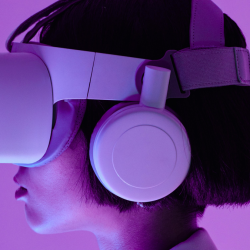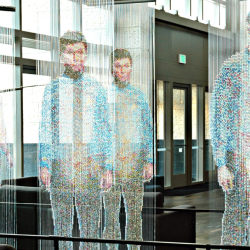Are you a victim of risk-averse corporate culture? If so, stop making excuses — it’s time to stand up for yourself.
We aren’t victim blaming, or pushing a macho culture. This is about perceptions. Specifically, the belief from B2B marketers that they are somehow victims of circumstance, facing insurmountable barriers and institutionalised anti-brand, risk-averse corporate culture.
B2B marketing has long been considered dull, lifeless and predictable. And the saddest part is, it’s completely true. It’s embarrassing. B2B marketers didn’t get into the profession to produce boring work, but the feedback from the industry is that it is still living up to its tedious, ‘playing it safe’ reputation. In fact, research by alan. reveals that 82% of people find the industry expected and repetitive, compared with 71% in 2017.
More than half of B2B marketers in our research (53%) are citing the same lines: “The business is too risk averse.” “Leadership doesn’t understand brand building.” “We don’t have the budget.” However, CEOs, CFOs and COOs are united and unequivocal in their views: it’s the marketer’s job to tackle the culture of risk-aversion and educate the business on the value of building bold B2B brands.
The message to marketers is quite clear: step up, be brave and hold yourself accountable for destroying these barriers.
Be a little more B2C
B2B brands have electrifying stories to tell and deserve to tell them in the same way as B2C — with intelligence, imagination and emotion. Since the start of the pandemic, B2B marketers have been calling for an injection of humanity, with more and more pressure on agencies to make the B2B experience provocative, emotional and stimulating. And there has been some progress. Over the past few years, we’ve seen B2B marketing adopt techniques from B2C — from decision-making processes to communications tactics.
But still very few B2B marketers have the guts to step out of their comfort zones and tap into the vocabulary of bolder, more emotional marketing. They still build their products on ‘boring’ traditional B2B tactics and then sell in line with industry jargon, expecting their ever-changing customer audience to understand what they mean. Well they don’t. B2B products or services should be sold and marketed with a new language. One that communicates to their audience with a personality that chimes with how real people read, think and connect.
Digital is your new best friend
Digital change is happening and fast. It will likely be the biggest influence on B2B marketing in the next year. New techniques, technologies and platforms are pushing more B2B marketers towards digital marketing tactics, such as SEO, influencer, website and video marketing, as well as digital channels, including social media platforms. B2B marketers have the power to be more imaginative and innovative across digital platforms, while delivering work quicker, more effectively and more cost-efficiently. Creating a B2B digital marketing campaign is not an easy task, but the rewards of implementing a holistic digital marketing strategy can be reaped for a long time.
“Keep calm and carry-on investing”
The sentence every brand marketer wants to hear, but one that will make any CFO looking at the bottom line anxious as we continue to head into uncertain economic territory. When times are hard, we humans are simply hardwired to focus on the now and not the future. But marketers need to push past the sugar-rush of instant gratification and better assess long-term brand investment. The evidence doesn’t lie. As we all well know thanks to Binet and Field’s analysis of IPA data, those who invest in excess share of voice (eSOV) during a recession will reap the rewards of long-term profit, when we eventually come out the other side. By fighting the hardwiring head on, focusing on brand building fundamentals and investing in the right areas, marketers can emerge victorious.
Time is up. The games are over. B2B marketers can no longer deflect the blame for the industry’s lifelessness, or hide behind its status quo. To change the course and take a new direction — with all the rewards that this can reap — embracing the fear, championing some risk and becoming a trailblazer is the only way B2B marketing will survive with its dignity intact.
Featured image: Blake Lisk / Unsplash































